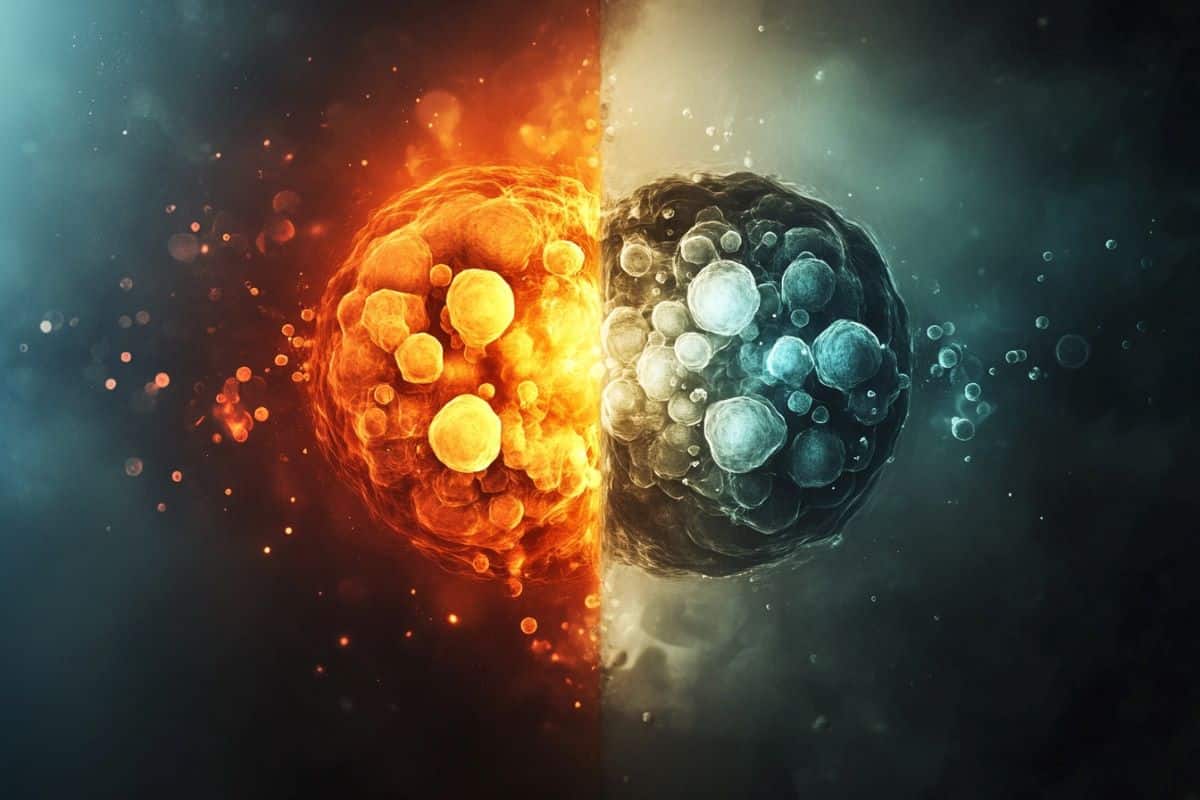Summary: Scientists have identified a key protein, AP2A1, that may hold the secret to reversing cellular aging. The study found that suppressing AP2A1 in older cells led to rejuvenation, while overexpressing it in young cells accelerated senescence. This protein interacts with integrin β1, which strengthens cell adhesion and contributes to the enlarged structure of aging cells.
By manipulating AP2A1, researchers could potentially develop new treatments to combat age-related diseases and improve skin health. The findings provide new insights into how stress fibers influence cell size and senescence. AP2A1 could serve as a biomarker for aging and a target for therapies aimed at slowing down or even reversing the aging process.
Key Facts:
- Aging Protein Identified: AP2A1 plays a crucial role in maintaining the enlarged structure of aging cells.
- Reversing Senescence: Suppressing AP2A1 rejuvenates older cells, while increasing it accelerates aging.
- Potential Therapy Target: AP2A1 could be used to develop treatments for age-related diseases.
Source: Osaka University
There are a multitude of products for sale that promise the appearance of eternal youth by erasing wrinkles or firming up jaw lines; but what if we could truly turn back time, at the cellular level? Now, researchers from Japan have found a protein that may do just that.
In a study published this month in Cellular Signaling, researchers from Osaka University have revealed that a key protein is responsible for toggling between ‘young’ and ‘old’ cell states.

As we age, older, fewer active cells, known as senescent cells, accumulate in multiple organs. These cells are noticeably larger than younger cells, and exhibit altered organization of stress fibers, the structural parts of cells that help them move and interact with their environment.
“We still don’t understand how these senescent cells can maintain their huge size,” says lead author of the study Pirawan Chantachotikul.
“One intriguing clue is that stress fibers are much thicker in senescent cells than in young cells, suggesting that proteins within these fibers help support their size.”
To explore this possibility, the researchers examined AP2A1 (Adaptor Protein Complex 2, Alpha 1 Subunit). AP2A1 is a protein that is upregulated in the stress fibers of senescent cells, including fibroblasts, which create and maintain the skin’s structural and mechanical characteristics, and epithelial cells.
The researchers eliminated AP2A1 expression in older cells and overexpressed AP2A1 in young cells to determine the effect on senescence-like behaviors.
“The results were very intriguing,” explains Shinji Deguchi, senior author. “Suppressing AP2A1 in older cells reversed senescence and promoted cellular rejuvenation, while AP2A1 overexpression in young cells advanced senescence.”
Furthermore, the researchers found that AP2A1 is often closely associated with integrin β1, a protein that helps cells latch onto the scaffolding-like collagen matrix that surrounds them, and that both AP2A1 and integrin β1 move along stress fibers within cells.
In addition, integrin β1 strengthened cell–substrate adhesions in fibroblasts; this might explain the cause of the raised or thickened structures characteristic of senescent cells.
“Our findings suggest that senescent cells maintain their large size through improved adhesion to the extracellular matrix via AP2A1 and integrin β1 movement along enlarged stress fibers,” concludes Chantachotikul.
Given that AP2A1 expression is so closely linked to signs of aging in senescent cells, it could potentially be used as a marker for cellular aging. The research team’s work may also provide a new treatment target for diseases that are associated with old age.
About this genetics and aging research news
Author: Saori Obayashi
Source: Osaka University
Contact: Saori Obayashi – Osaka University
Image: The image is credited to Neuroscience News
Original Research: Open access.
“AP2A1 modulates cell states between senescence and rejuvenation” by Pirawan Chantachotikul et al. Cellular Signaling
Abstract
AP2A1 modulates cell states between senescence and rejuvenation
Aging proceeds with the accumulation of senescent cells in multiple organs. These cells exhibit increased size compared to young cells, which promotes further senescence and age-related diseases.
Currently, the molecular mechanism behind the maintenance of such huge cell architecture undergoing senescence remains poorly understood.
Here we focus on the reorganization of actin stress fibers induced upon replicative senescence in human fibroblasts, widely used as a senescent cell model.
We identified, together with our previous proteomic study, that AP2A1 (alpha 1 adaptin subunit of the adaptor protein 2) is upregulated in senescent cells along the length of enlarged stress fibers.
Knockdown of AP2A1 reversed senescence-associated phenotypes, exhibiting features of cellular rejuvenation, while its overexpression in young cells advanced senescence phenotypes.
Similar functions of AP2A1 were identified in UV- or drug-induced senescence and were observed in epithelial cells as well. Furthermore, we found that AP2A1 is colocalized with integrin β1, and both proteins move linearly along stress fibers.
With the observations that focal adhesions are enlarged in senescent cells and that this coincides with strengthened cell adhesion to the substrate, these results suggest that senescent cells maintain their large size by reinforcing their effective anchorage through integrin β1 translocation along stress fibers.
This mechanism may work efficiently in senescent cells, compared with a case relying on random diffusion of integrin β1, given the enlarged cell size and resulting increase in travel time and distance for endocytosed vesicle transportation.






